Everyone love posting about things that they bought, especially when they are interesting, a bargain, or great in some way. I’m guilty of the same, but I also think that some of your lesser purchases, especially wrong purchases, are at least as instructive as the great ones. After all, if you don’t know what’s bad, you can’t tell what’s good. One who only drinks 30 years aged puerh cannot know what is great about it until they’ve tried faked 30 years aged puerh.
So in that spirit, I present you a few duds that I have purchased over the years. These are generally failed gambles on eBay and other such sites. For everyone that is a win, there is at least one that is not.
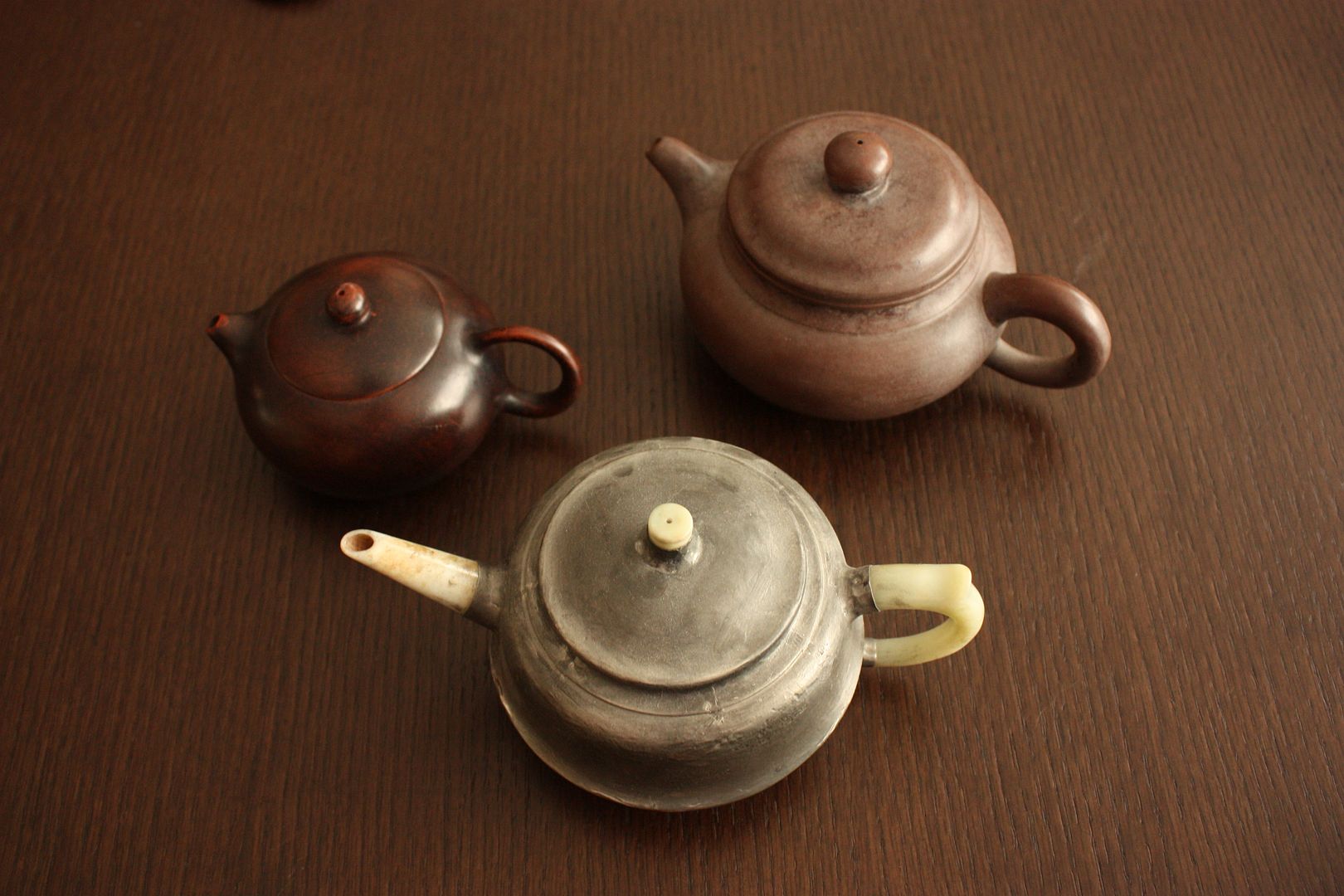
These three pots, I think, represent three types of fake pots that you can find. Now, a general rule of thumb – the point of faking a pot is to either make it look old, or to make it look like a famous maker made it. Here, I am mostly concerned with the first type, because the second type is everywhere, and even seasoned collectors I know cannot tell the difference – a perfectly made pot bearing the perfect replica of a famous master’s seal is going to be pretty difficult to tell. A yixing dealer in Taipei told me that she can sort of tell, but all kinds of funny business happens to make the whole process rather haphazard. Old masters might disavow earlier works (either to prop up the value of newer works, or because they don’t like the old ones) and brothers, cousins, and what not often borrow the famous maker’s seals and even clay to create their own pots, but sold under the famous maker’s name. That type of forgery is not what I’m talking about here.
The first I want to talk about is the metal looking thing. First, a closeup
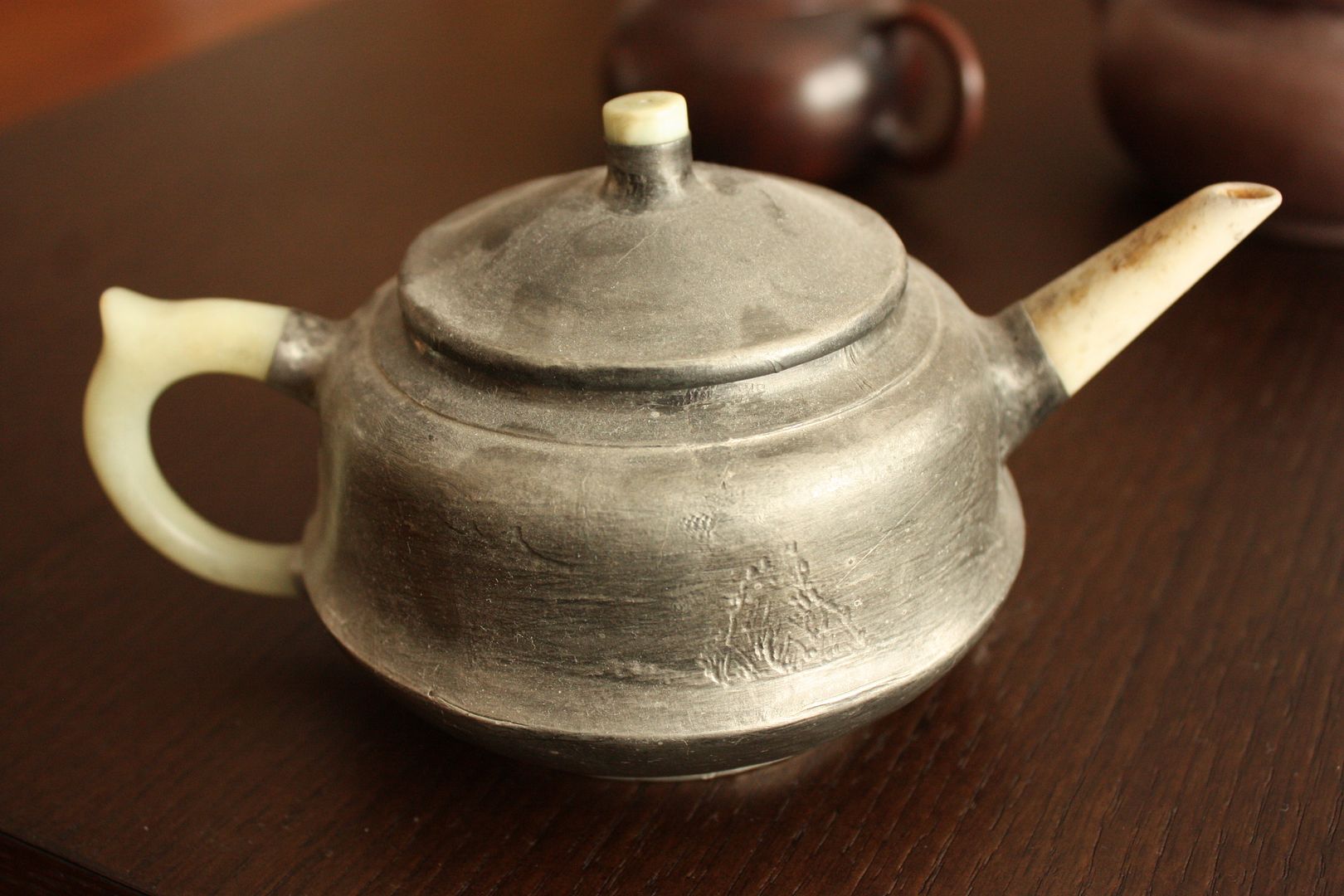
Now, this is trying to pretend like it’s a pewter-wrapped teapot. Those things have clay on the inside and a layer of pewter on the outside, with calligraphy and painting carved into the body of the pewter, which is soft and easy to work. The real McCoy costs at least a few hundred USD, at a minimum, and have nephrite jade handles and spouts. In other words, great if you can fake it right.
These things, however, are not that. Instead, what they are, as far as I can tell, are plastic handle and spouts that, from a distance (especially in a picture) are difficult to tell apart from a jade. Also, the body’s metallic sheen is probably from a thin layer of aluminium foil, wrapped around the clay body of the pot. One key difference is that the bottom of the faked pots generally display naked clay, whereas the bottom of the real pewter pots have a layer of pewter at the base of the pot.
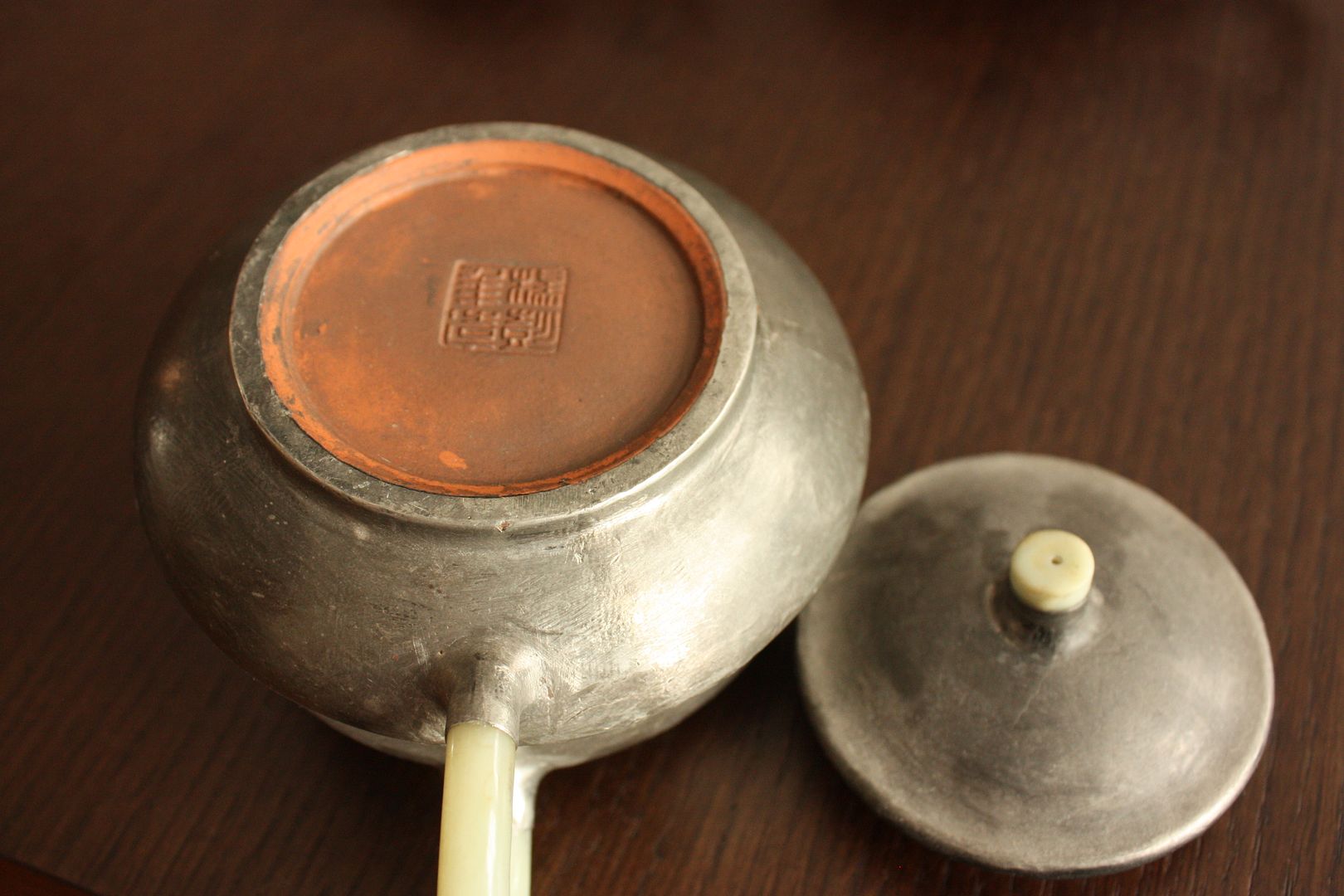
Also, you can see that the “carving” is not really on the “metal” but is rather wrapped under it, at least if you look carefully. I did a casual search on eBay and I found at least three or four of these, some of which have bids from buyers who, I’d imagine, are falling for the trick.
The second type here is the famous, or infamous, shoe polish pot. They don’t necessarily have to be shoe polish. It can, in fact, be anything, as long as it’s black and oily. The point of the shoe polish is to make the pot look dark and old and used. Except that old, used pots that are dirty don’t look like that. They look like this.
One of the most obvious signs of shoe polish is when you see black streaks. Notice that over the body of the pot, the black is not even, and that they appear streaky when examined closely.
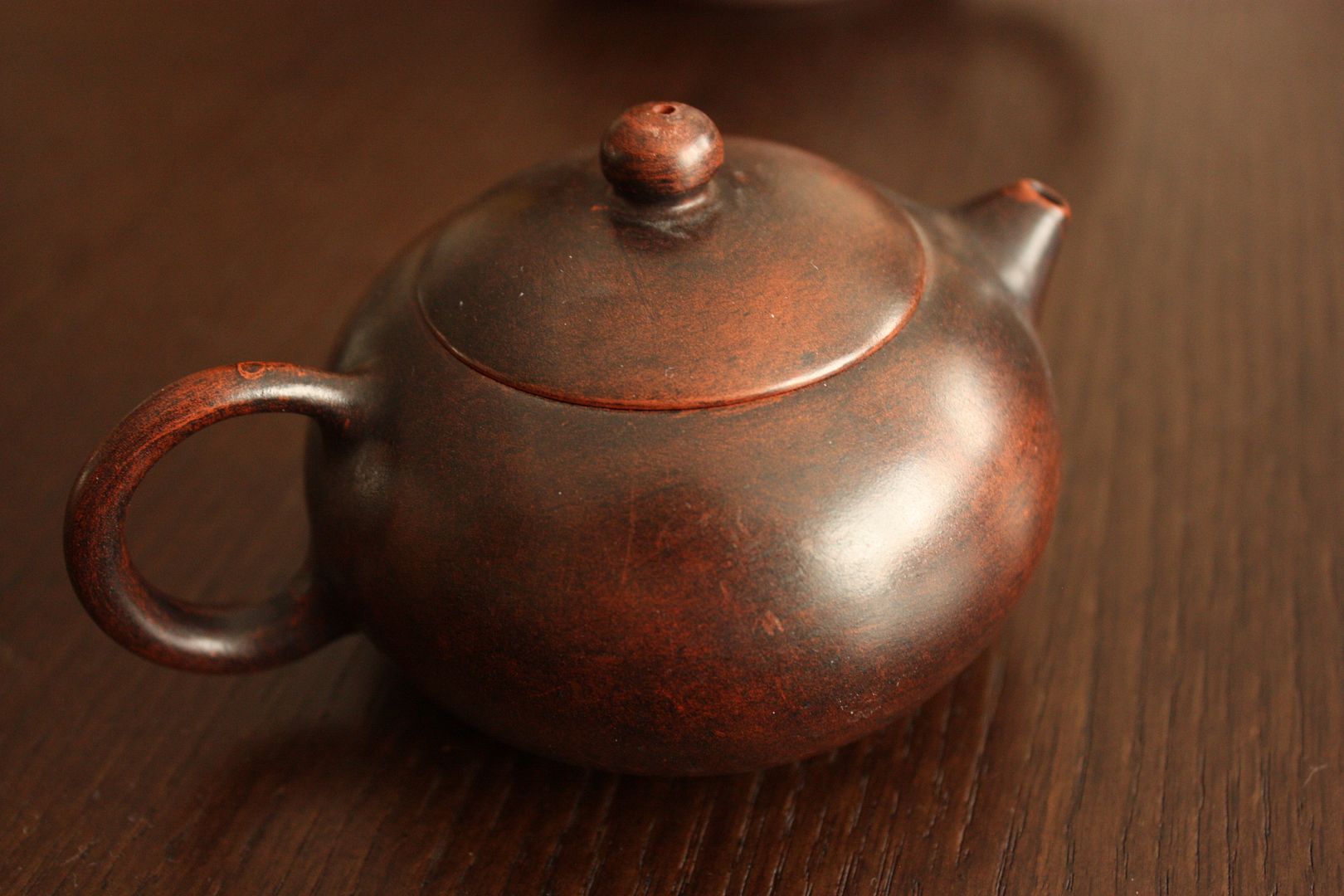
Also, if you can examine it in person, you’ll feel that the surface of the pot is somewhat sticky. That’s a sure sign of something else other than natural dirt. It also is impervious to bleaching, as I tried yesterday to test it out.Organic compounds left behind by natural tea drinking will wash away very easily when you bleach the pot.
Also, if you can see the interior, you’ll see obvious problems.
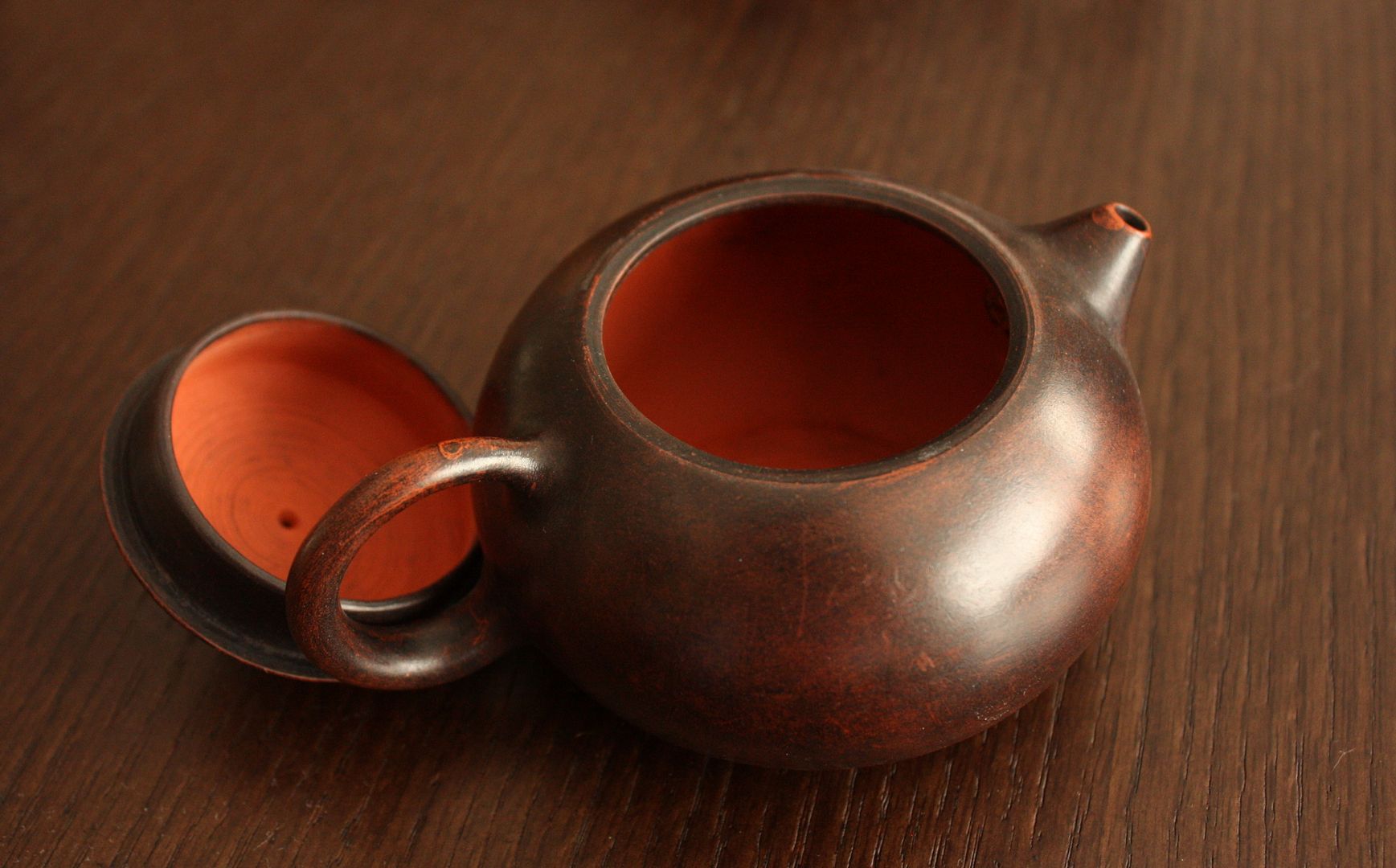
That’s right, the pot is pristine inside, while super black outside. Nuff said. This particular pot seems to have been made with some kind of clay on a wheel, as you can see evidence of it having been thrown on some pottery wheel. The clay is much lighter in colour than yixing clay – probably shantou or some such. Somebody even bothered to put a seal at the bottom of the pot, which, of course, is pointless. Funny enough, the seal is sideways.
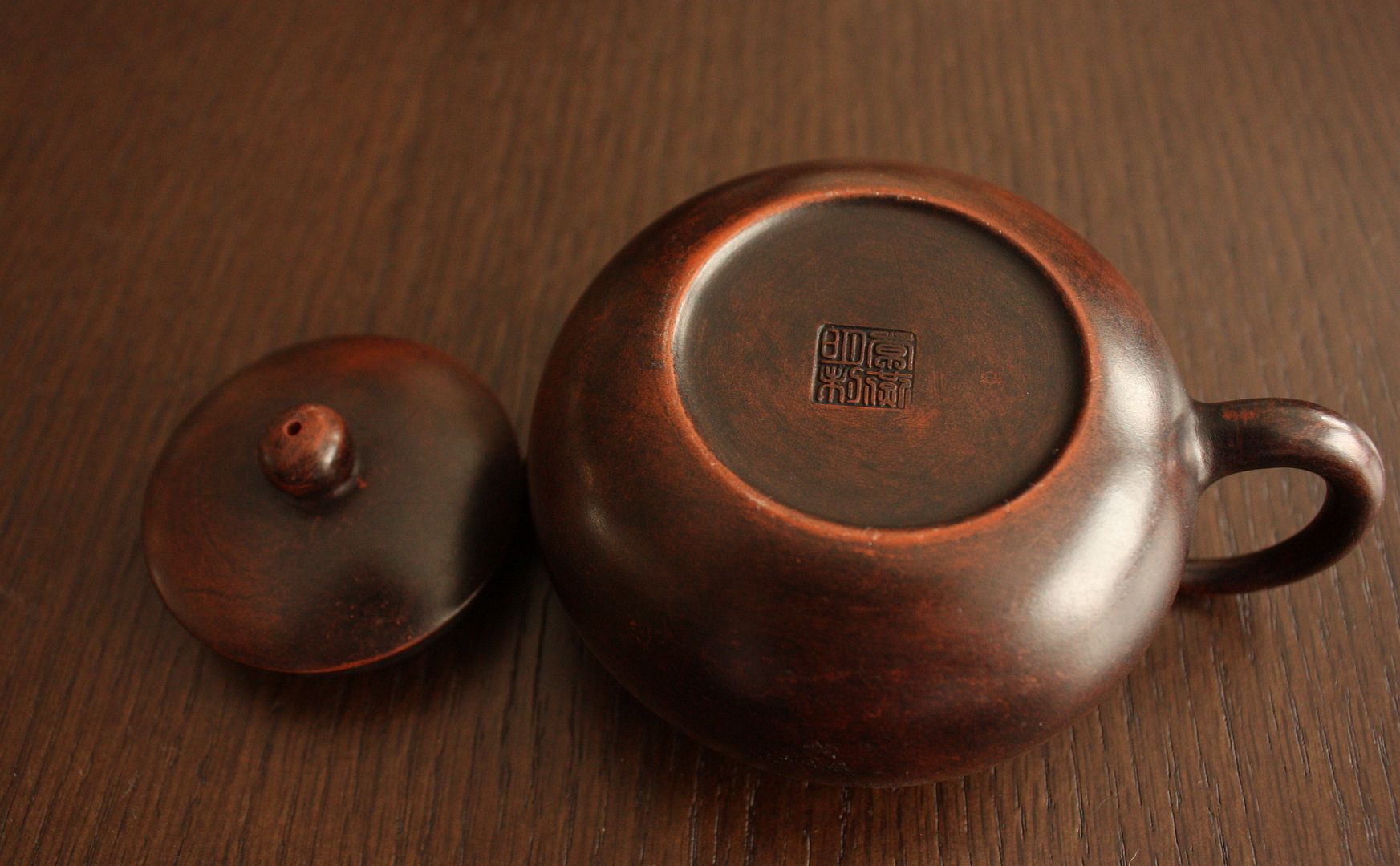
The last I want to show you is sort of the reverse of the above. In this case, the interior of the pot has been deliberately dirtied-up to make it look old. The surface of the pot has this weird white stain that won’t come off. Inside, you can see residue of some yellow gunk, something that looks like dirt, and some remnants of what might be tea leaves. It smells funny too.
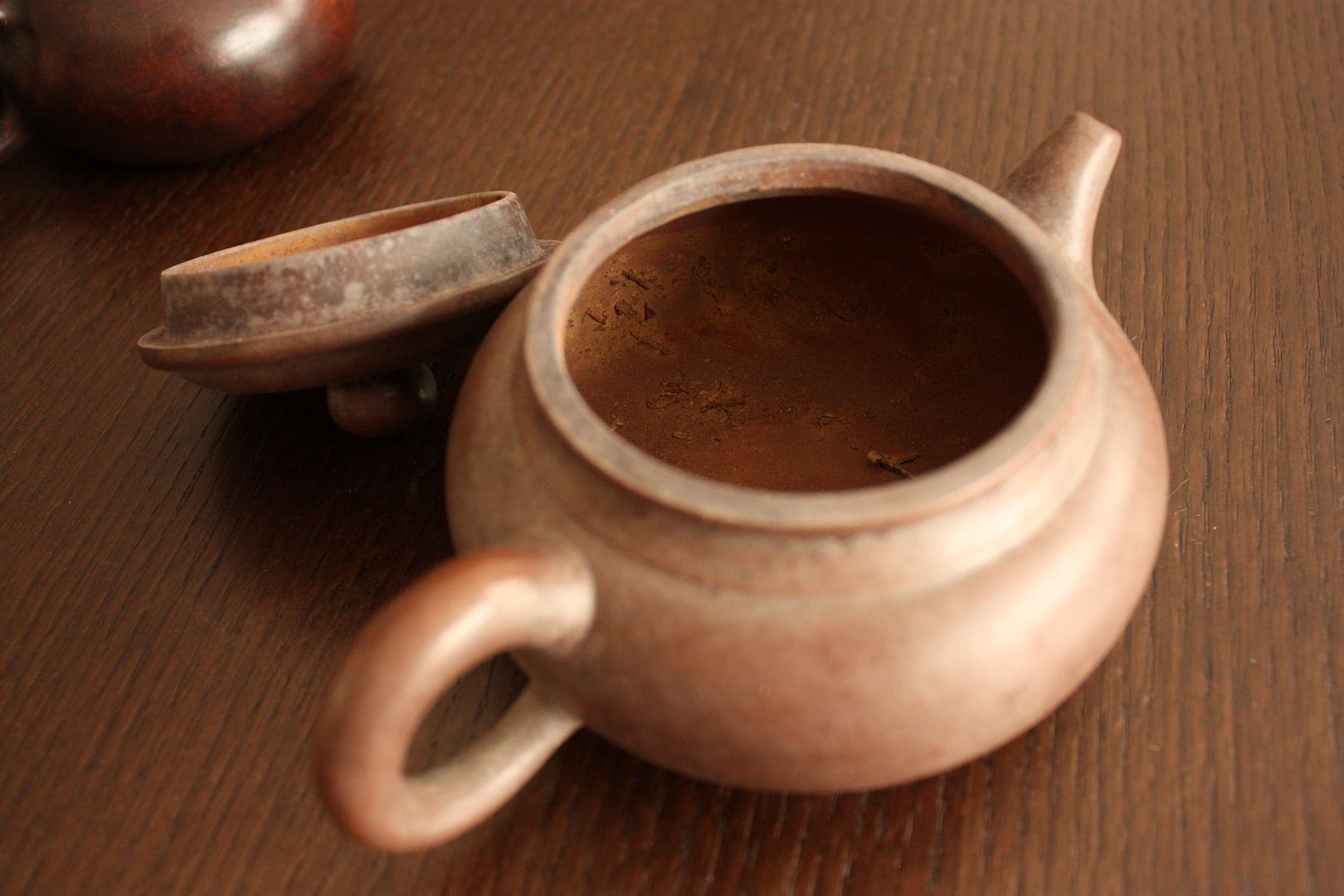
The pot is also ginormous, and is completely useless. It comes with the fake seal of Gu Jingzhou, one of the greatest yixing masters of the 20th century.
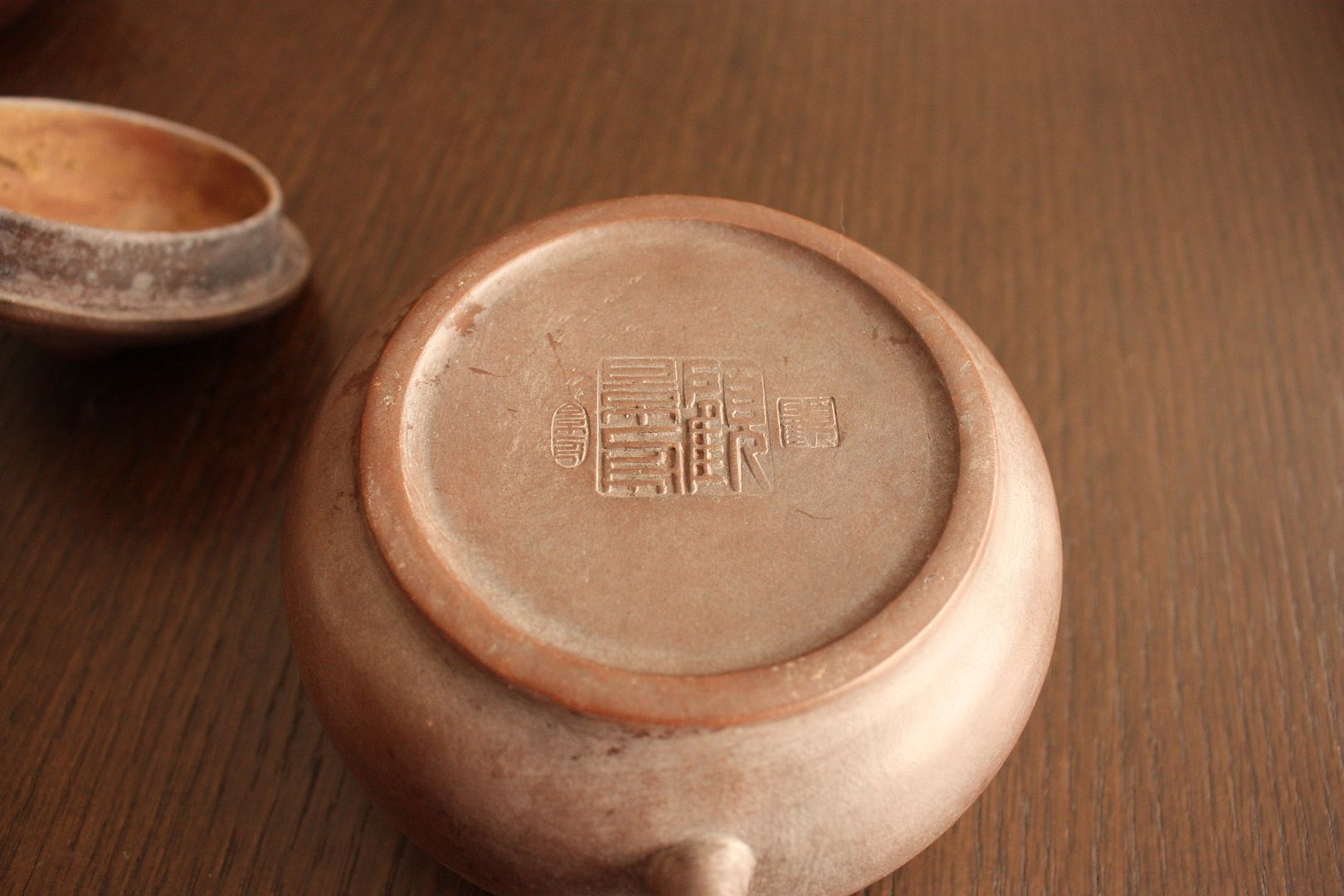
Pots like this one are ALL OVER eBay. Don’t even try buying them. I can imagine if this pot were to have no surface issues and clean inside, it might actually fetch an ok price – not exactly masters price, as 99% of the Gu Jingzhou on the market are fakes, but it’ll at least be, possibly, a usable pot. Now, it’s just a worthless piece of junk.
This is the last problem with tuition pots – not only did they cost you money (not too much in any of these cases, thankfully), they also eat up space, and become a sort of albatross. I can’t give it away, or sell it. I suppose you could give it to places like Goodwill, although even that seems rather evil. You could just throw it away, which I’ve thought about doing. Right now, I’m considering using them as practice pieces for gluing – I need to repair something, and to get the best results, I should probably practice how to glue things together first. Breaking these apart, then gluing them up, might be the best use these pots have seen since their creation.











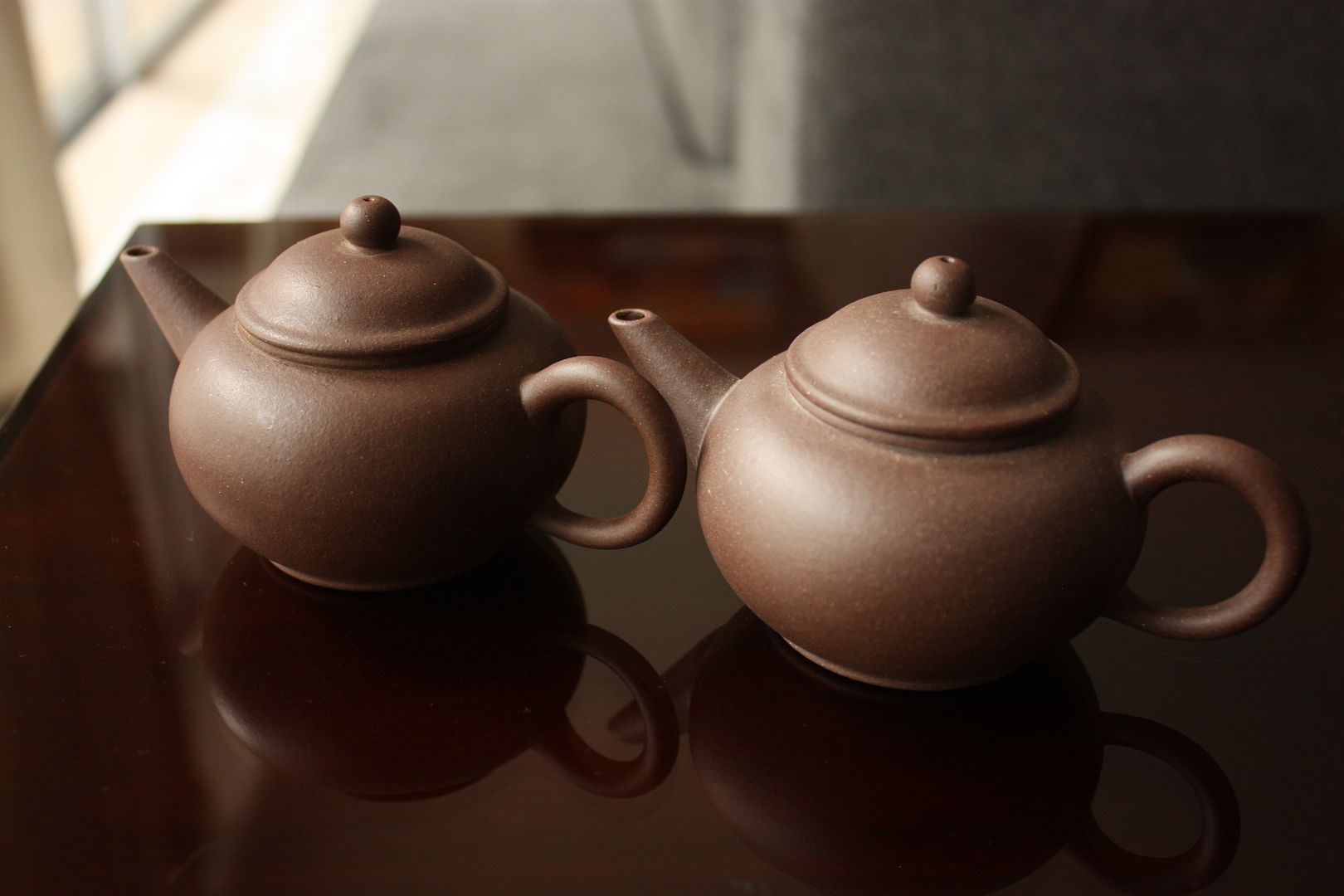








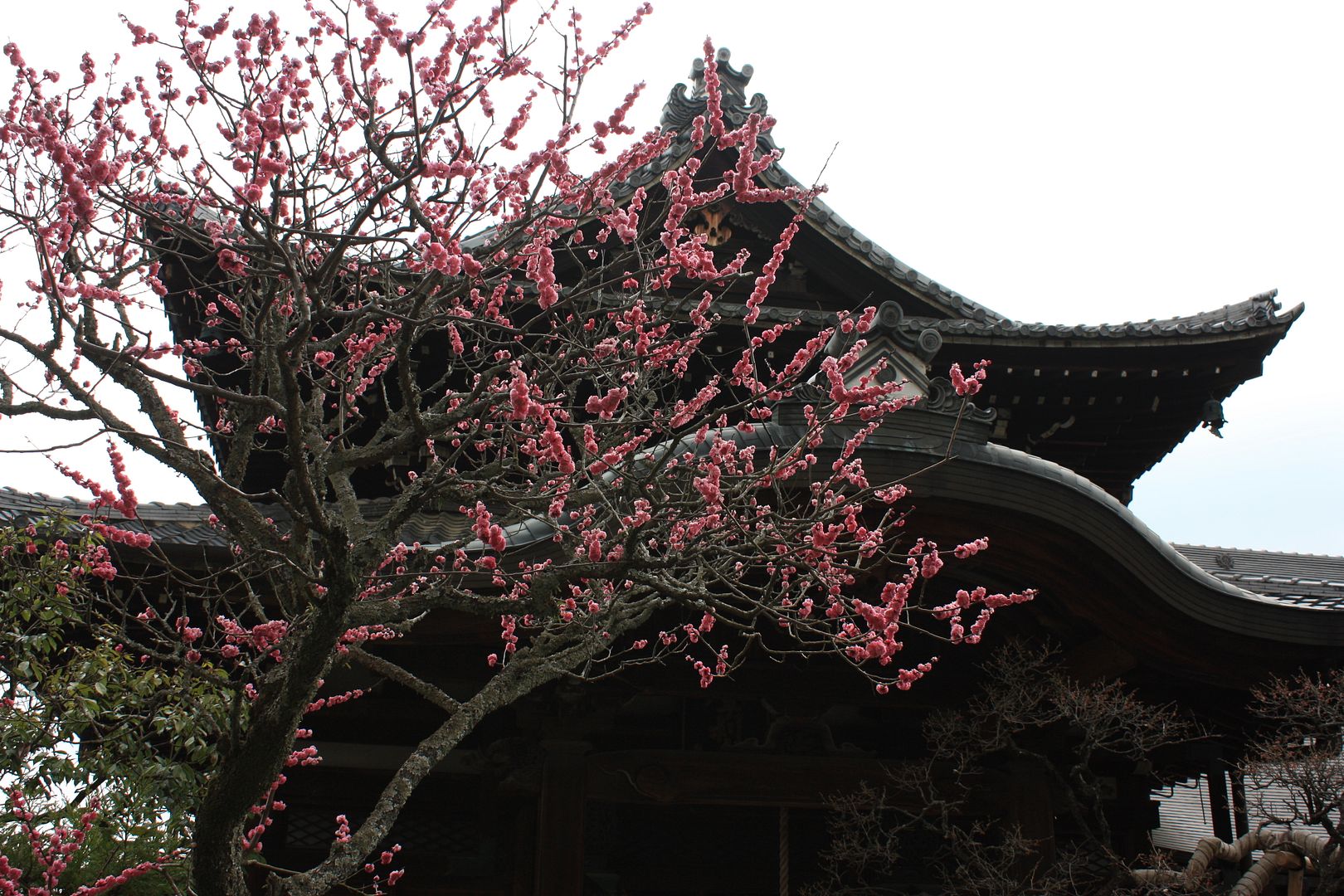
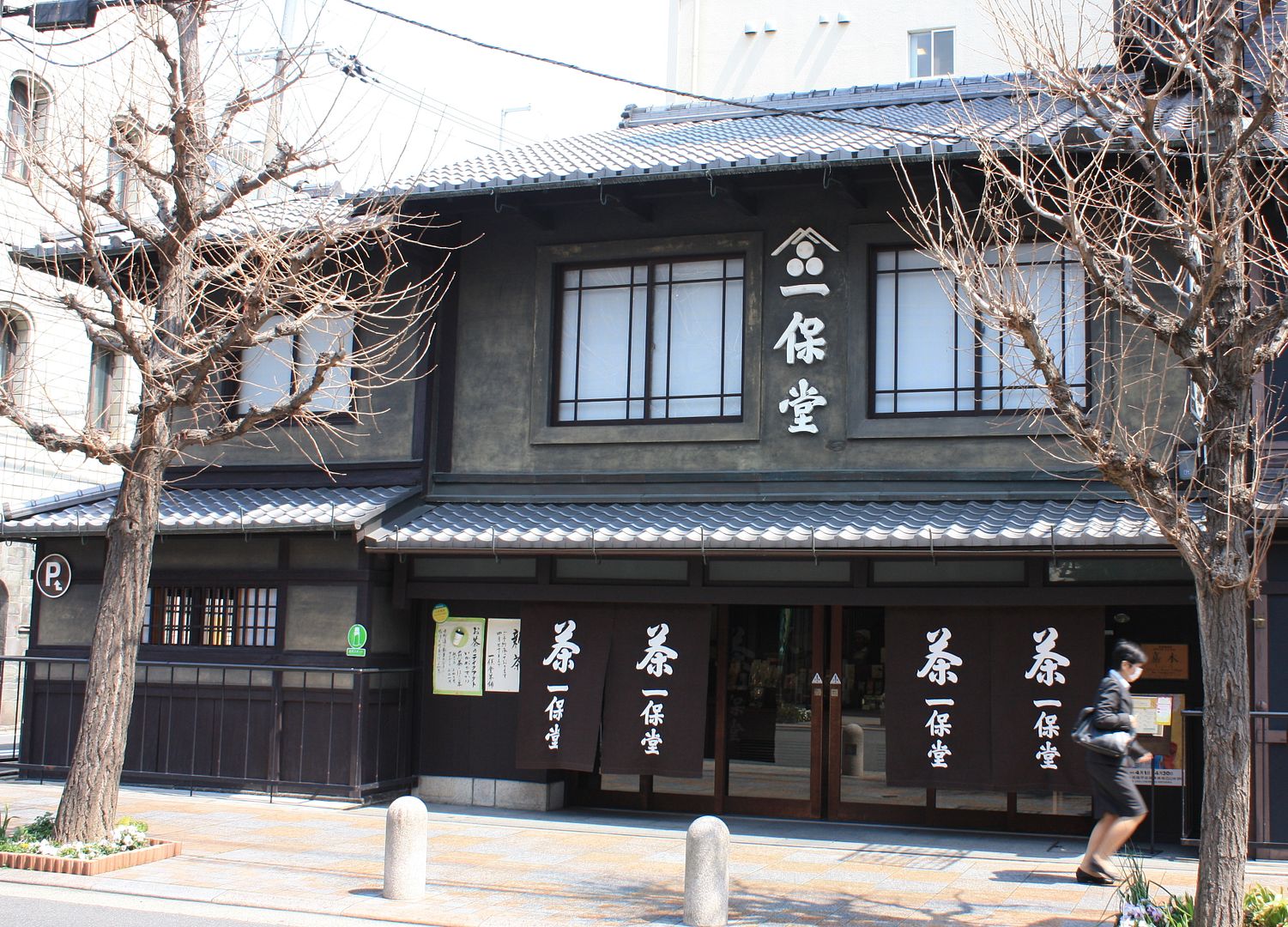
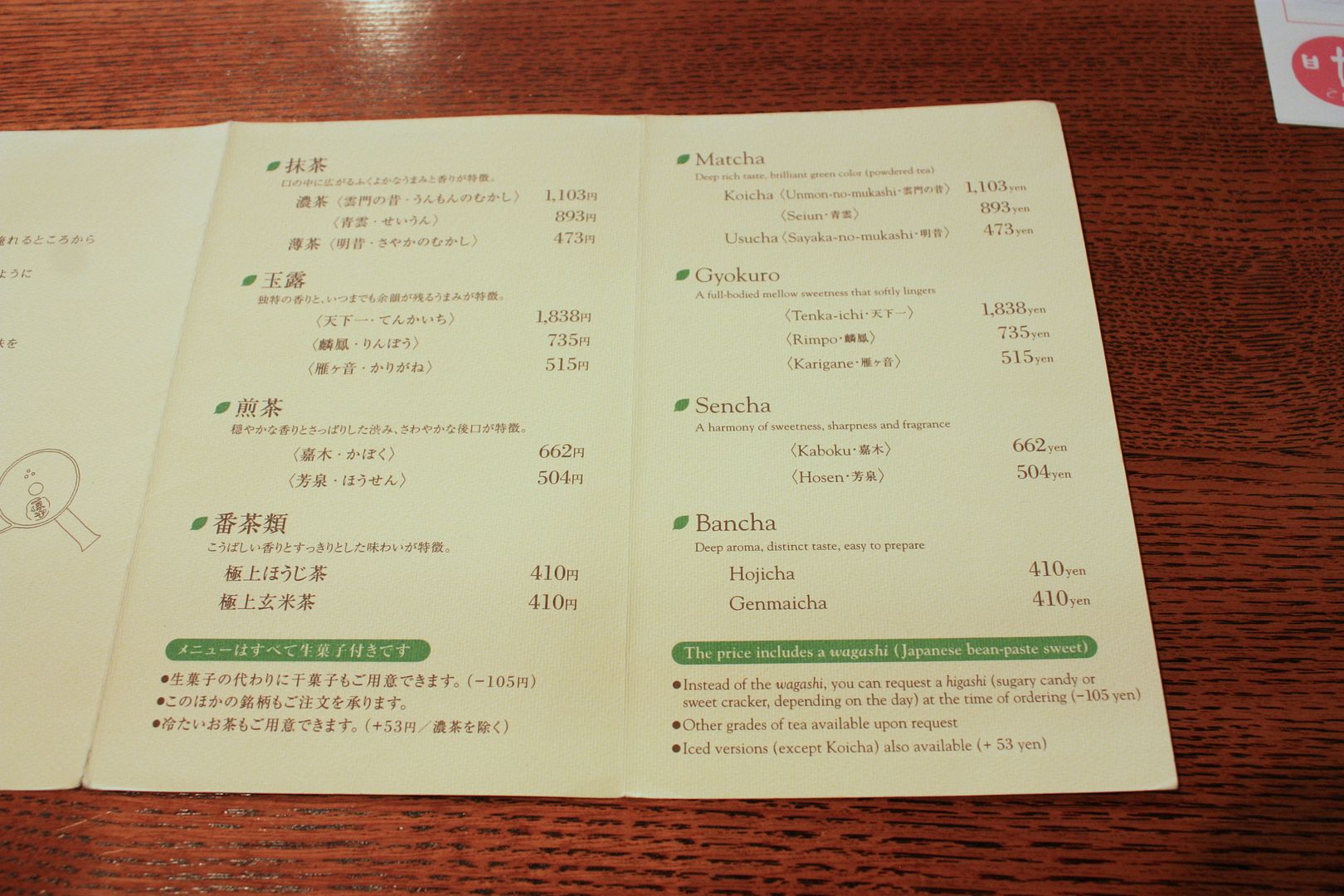


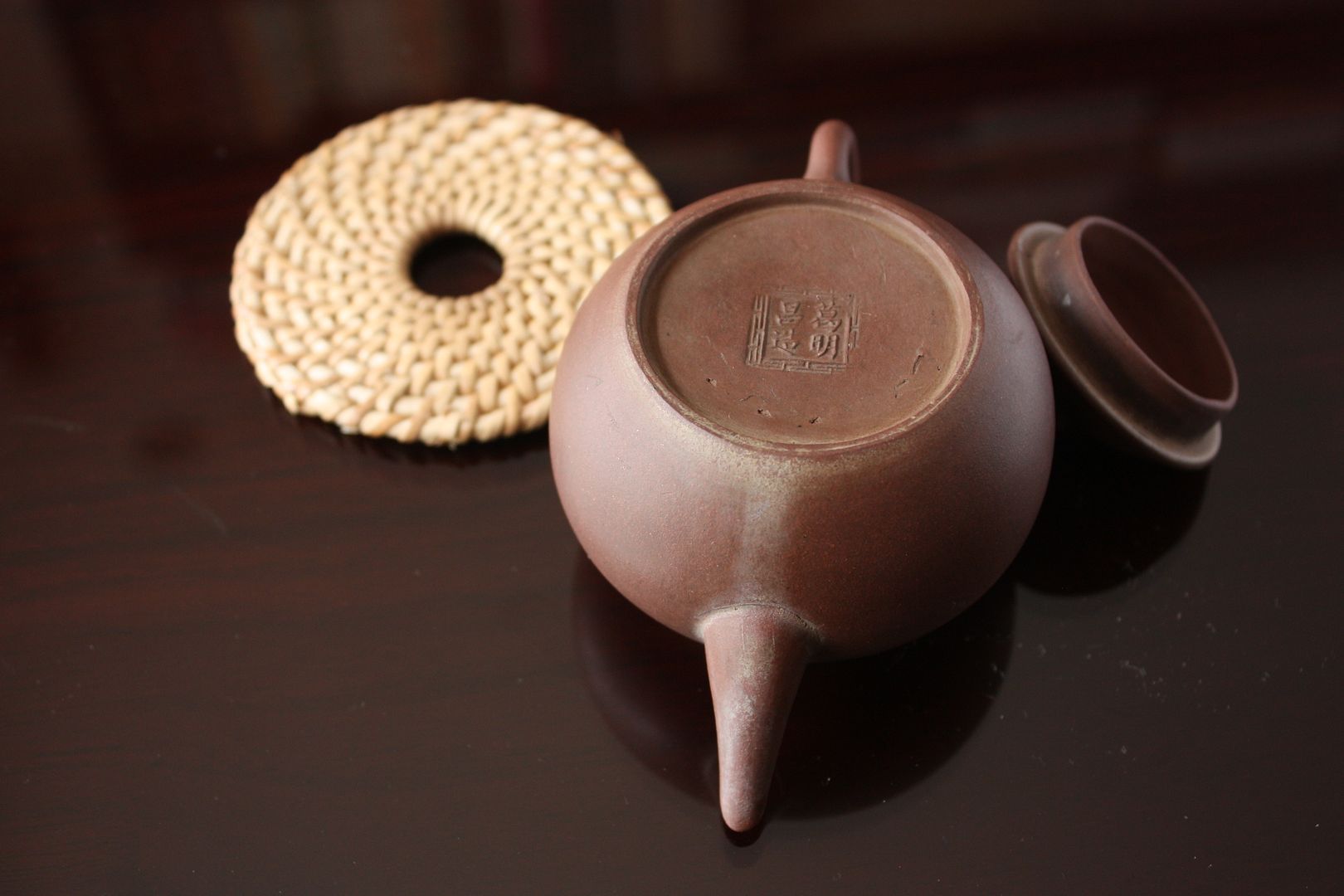








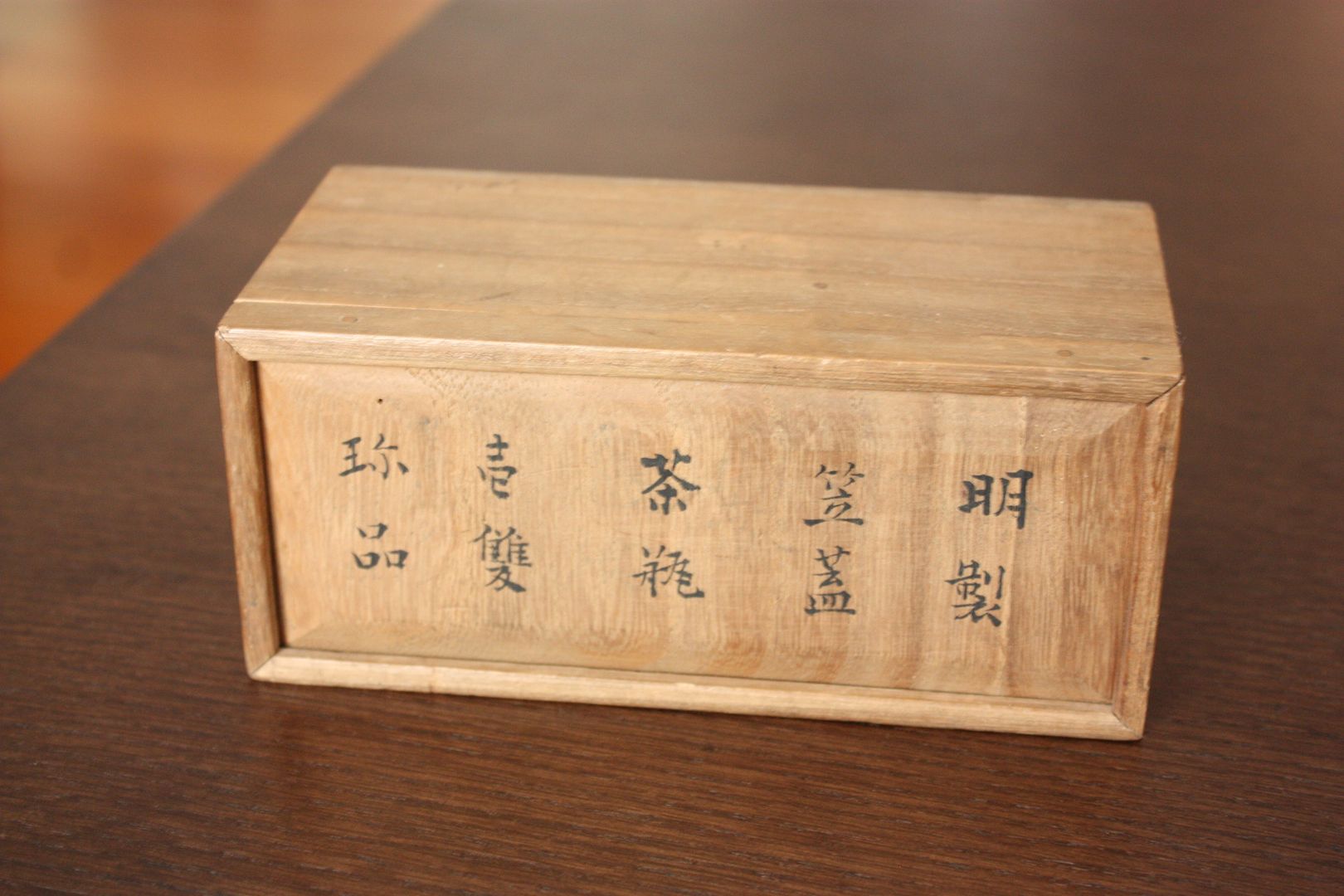
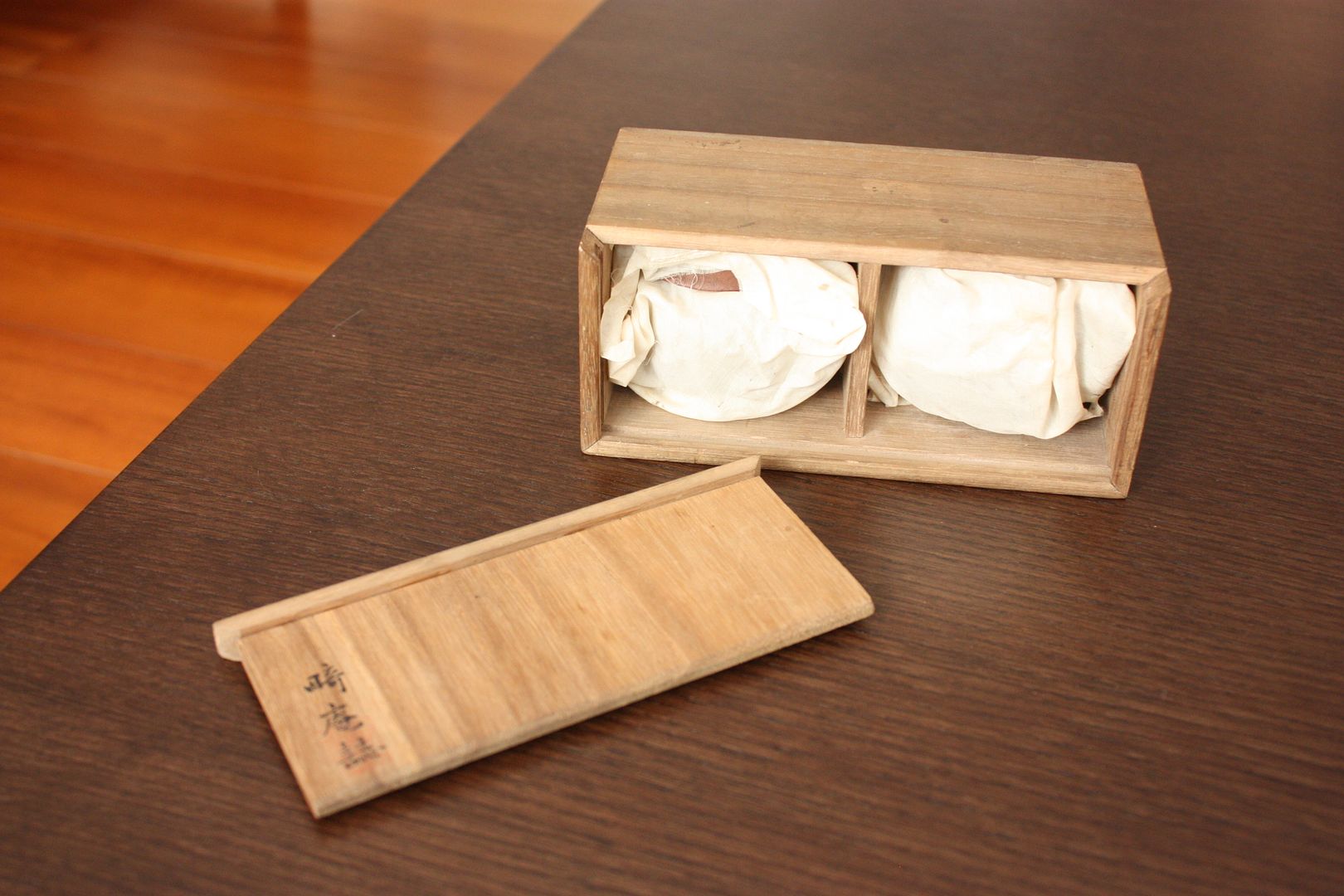
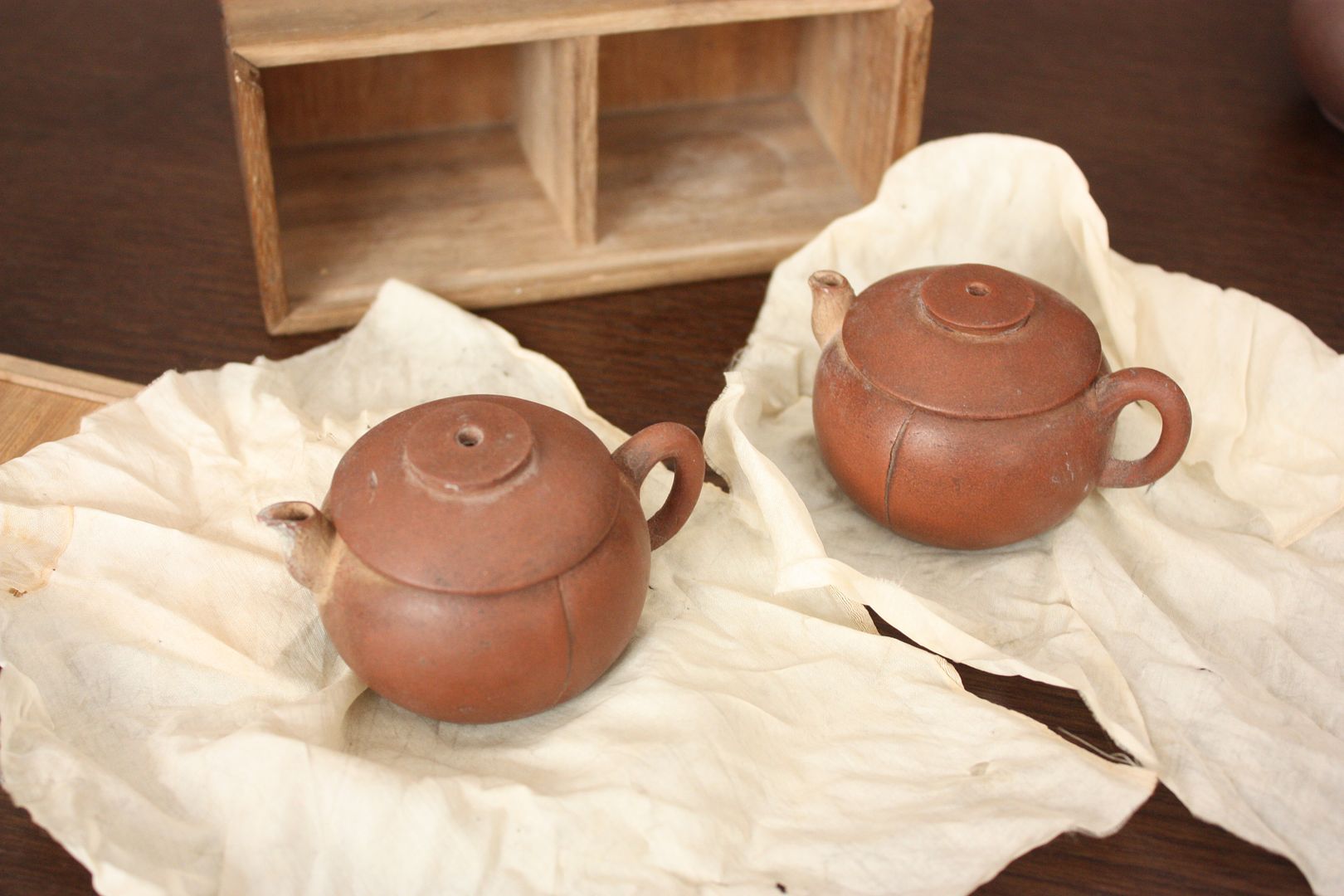
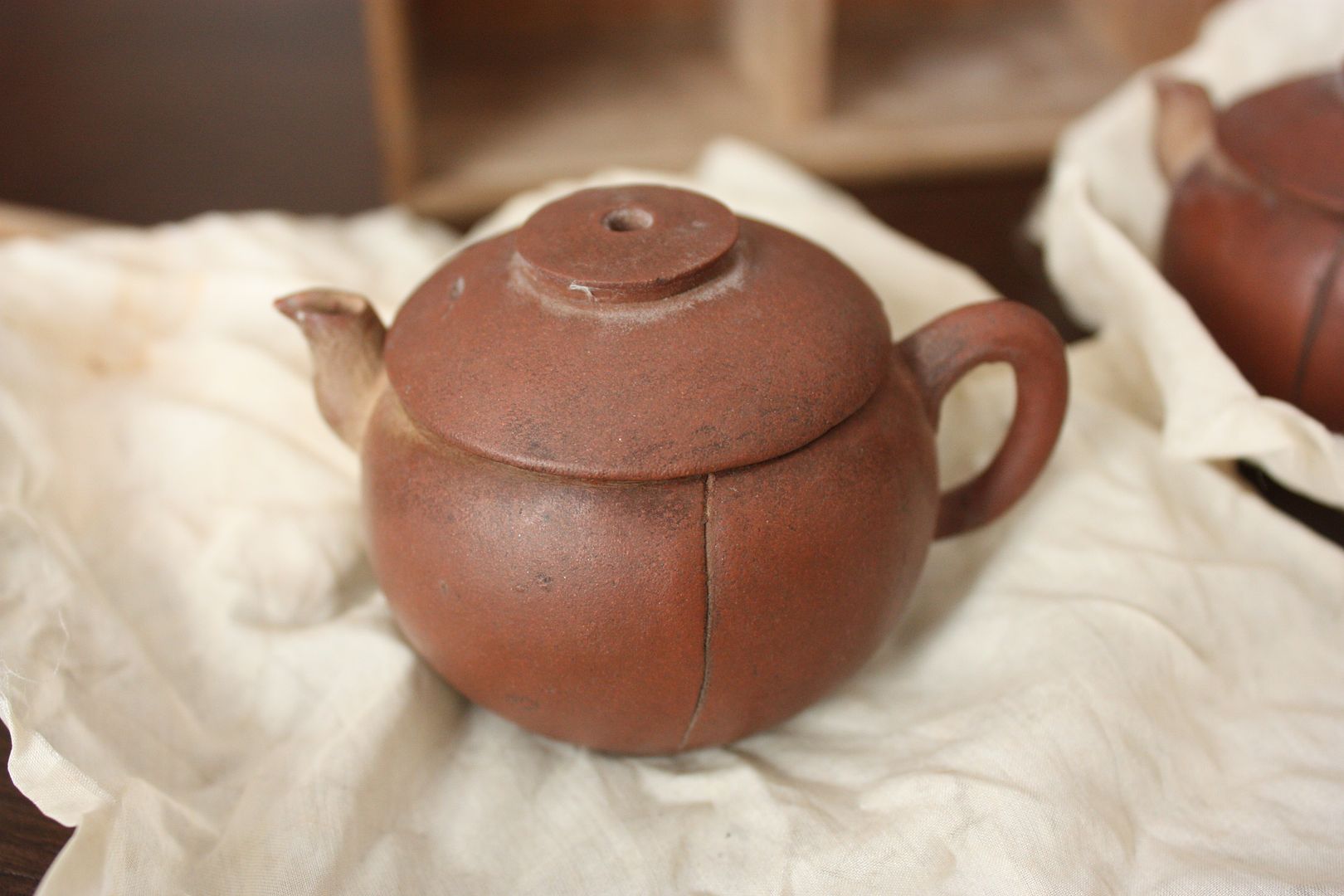
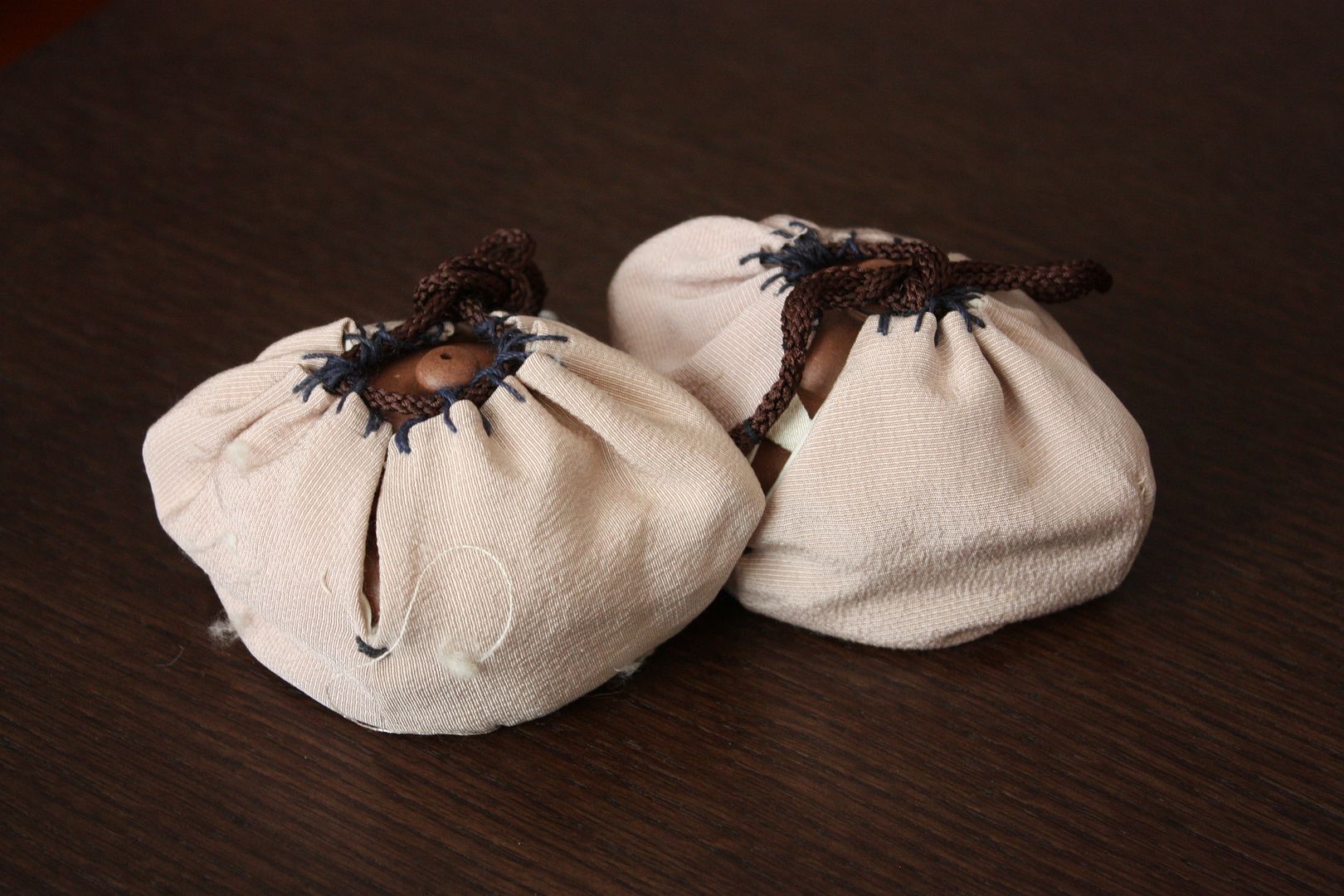
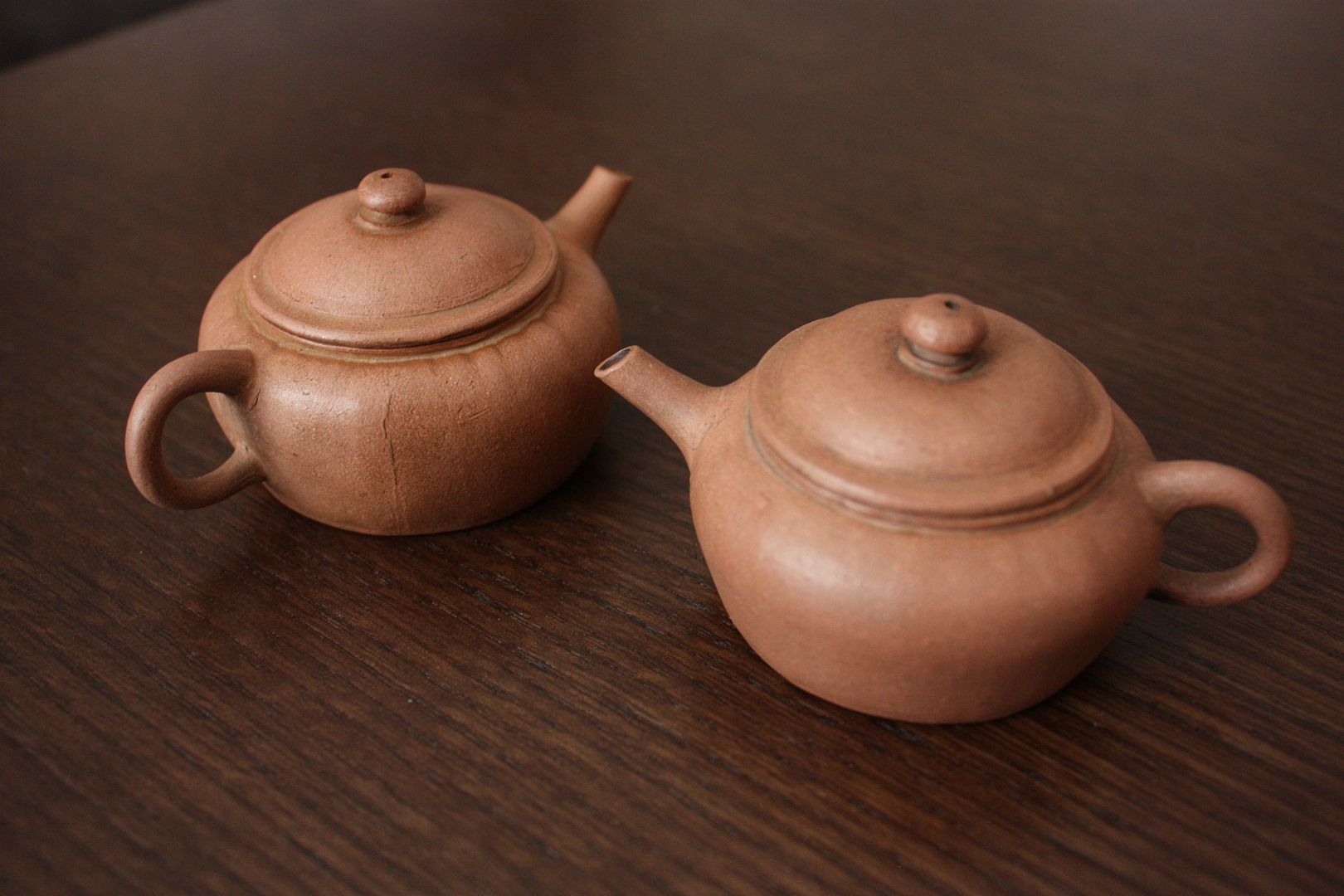
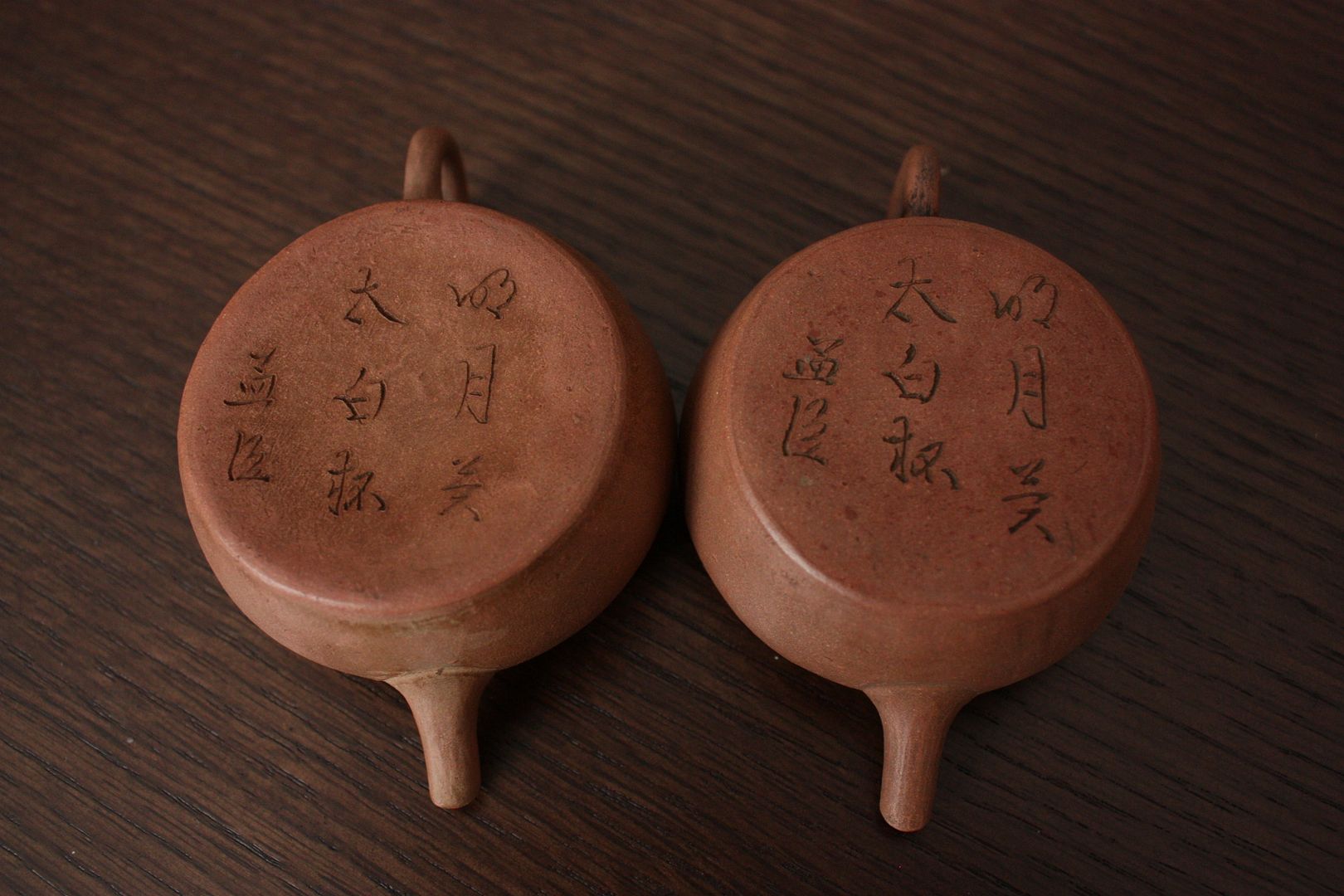
Yeah whisky prices have been leaking too, as well as luxury watches. I wrote a post maybe a decade ago…